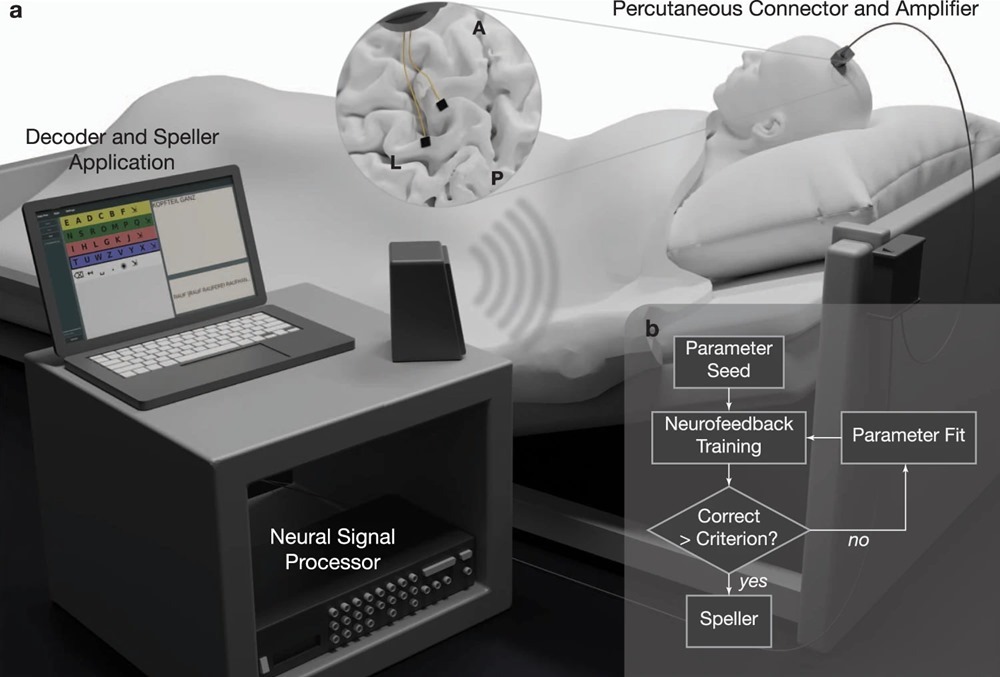Posted ,
Reading 2 mins.
In Germany, a young man suffering from Charcot’s disease and locked-in syndrome (LIS), managed to communicate thanks to brain signals sent directly to a high-tech computer interface. A revolution for scientists, but also for the patient who was able to communicate again with his family circle, especially his children.
The lines of communication have gradually died out
It is a spectacular progress in the world of neuroscience that has just been achieved. A man of German origin of about 30 years managed to express himself thanks to the implantation of two electrodes in his brain and a computer interface.
The feat lies in the fact that the patient was totally unable to communicate, because he is quadriplegic due to Charcot’s disease. Also called Amyotrophic Lateral Sclerosis (ALS), it is the most frequent pathology of the motor neuron. It is a neurodegenerative disease of the brain and bone marrow that manifests as weakness and then muscle wasting.
For this patient, all muscle communication pathways were gradually closed. He couldn’t move his muscles or even open his eyes. He was in a statecompletely locked“, that is, locked in his own body, although fully conscious.
When medical science meets technology
The results of this study have been published in the scientific journal Kind Communication. It is an intelligent interface connected to brain implants (electrodes) capable of decoding a person’s thoughts. This is the reason why it is a major advance from a medical and technological point of view.
To achieve this feat, two arrays of 64 microelectrodes were implanted in the patient’s cerebral motor cortex.
This new way of communicating did not happen in a few hours. On the one hand, the patient had already tested another non-invasive version of this medical technology, when he could still open his eyes. On the other hand, it will have taken about 3.5 months to learn to communicate with the electrodes and the computer. To help him tame the tool, the experts have installed a system of “auditory neurofeedback“. The latter sends an audible signal to the patient to notify him that the electrode is activated.

One by one, by making horizontal eye movements (eyes closed), he selected letters one at a time until he formed words, then sentences. Thanks to the neural signals, a specially designed spelling program can read the letters aloud. The 30-something German can, in this way, select letters thanks to his mental impulses. Thus, he managed to express his needs and communicate via an intelligent interface “brain-computer”.
This long-term work will therefore not have been in vain, whether for the patient, his family, the community of patients suffering from Charcot’s disease with LIS as well as for the scientific world.
As the study’s lead researcher, Niels Birbaumer, also director of the Institute for Medical Psychology and Behavioral Neurobiology at the University of Tubingen, Germany, points out, “This shows that you can write sentences with the brain even if you are completely paralyzed without any eye movement or other muscles to communicate“.
